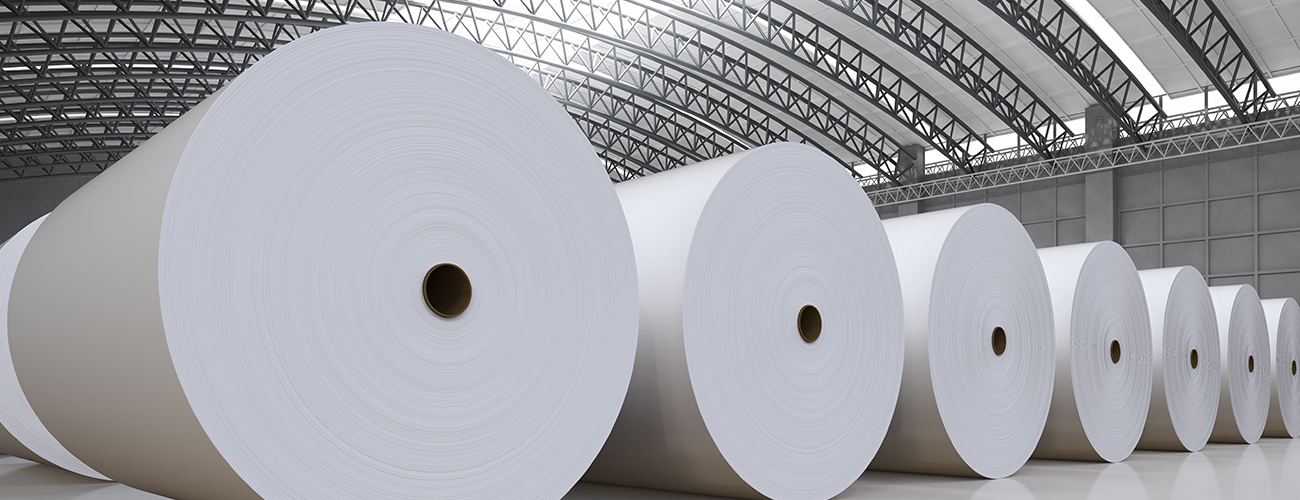The State of the Paper Supply Chain

Editor’s note: This article was initially published in December 2022 and updated in July 2023 to reflect the most recent changes in the paper market and ensure this publication is accurate and current. While we strive to provide our customers with the most up-to-date information, market conditions can change rapidly, and further research or contacting a representative from the Phoenix Group directly is always advisable.
We’ve seen paper shortages before, but not to the scale of the past few years. First, the global COVID-19 pandemic caused paper prices to rise because of material and shipping limitations. There were also unprecedented paper shortages as many mills switched their production capabilities from producing fine printing papers to packaging materials. Labor strikes by Finnish PaperMakers Union and several mill closings added to the supply constraints. Then, by mid-year 2022, the printing and paper industry found itself in a deeper supply chain crisis as demand for printing grew in some sectors to levels that exceeded pre-pandemic demand. The cumulative result was paper prices rose for some items by as much as 50 percent.
Learn more about where we stand in the paper industry today and where the global paper supply situation seems to be heading.
The Paper Supply Chain Today
Now that we’re halfway through 2023, we’ve had a chance to see how the global paper market has fared compared to projections. The good news? Overall, things are even better than we anticipated. Supply has stabilized—even if only due to lower demand—and prices have decreased, solving the major problems of low supply and spiking costs that plagued the past few years in the industry.
Increased Paper Supply
Coated and uncoated printing paper are readily available on account of high mill inventories, especially for uncoated paper. Paper supply is expected to remain high, but the increased inventory isn’t related to increased production—rather, it’s because of a decline in demand that started at the end of 2022.
The lower demand for paper is largely due to a decrease in large customer acquisition direct mail campaigns by credit card companies, consumer lenders, and energy companies, likely because of economic uncertainty and higher interest rates making these campaigns less profitable.
Decreased Paper Costs
Paper prices have dropped significantly compared to their highest points in 2022, which is a relief for many in the industry. In some cases, prices have dropped as much as 20 to 25 percent. Experts expect prices to stay low through mid-summer of 2023 at least.
Remaining Supply Chain Constraints
When the Billerud Paper Mill in Escanaba, Michigan, temporarily shut down in April 2023 following a fungal outbreak that killed one employee and sickened dozens of others, it caused shortages in domestic coated web paper supplies. Until this situation is resolved and the mill is reopened, expect to see brief supply chain constraints, followed by higher prices, with coated web paper specifically. However, this should have a short-term impact.
The Global Paper Shortage Going Forward
Consumers of paper and printed products are starting to prepare four to six weeks out when possible for jobs now, even though many items are available now or require two to three weeks to receive. Projects requiring large quantities of web rolls of paper should be ordered four to six weeks in advance, while those using sheetfed paper should allow two weeks or less.
We’re seeing other factors that, while not directly related to the paper supply, may continue to affect prices. Increased energy costs worldwide are making it more expensive to run paper mills and print shops. European mills are especially affected because they’re facing natural gas shortages. The Russia-Ukraine war is causing significant blockages to the supply chain in that area and increasing the cost of fuel. Plus, Russia’s role as a global supplier of uncoated paper to Europe—and bans on Russian exports by many countries due to the war—will continue to cause paper shortages. Closer to home, two large paper mills in the United States are closing, and when they are gone, we will see even less supply available.
Overall, we predict paper supply will be good through the end of 2023, and prices will remain well below the high price points of 2022.
We Can Help with Paper Supply Chain Issues
No matter what the paper industry is facing, The Phoenix Group of Companies will be your reliable partner. Due to the recent supply chain issues, we now maintain a paper inventory three times greater than the volume we carried before the pandemic. We haven’t just relied on our increased supply; we continue to search for paper daily, both from our existing sources and new, alternative suppliers.
When ordering paper in this challenging market, the best thing to do is plan at least four to six weeks ahead, place your order early, and remain open to changes due to supply chain issues. We can source alternatives that meet your specifications if the exact paper you want is unavailable. Once we find an alternative that works for you, we advise ordering it quickly while it’s still available. Many paper suppliers won’t hold the product while you decide because of the high demand—we’ve seen paper available in the morning and sold out by the afternoon, so don’t miss your chance to get what you need.
Above all else, don’t worry—this isn’t the first time we’ve witnessed the paper industry cope with supply shortages, and we’re sure it won’t be the last time. That’s why you need a print provider like Phoenix to help you complete your essential communications.
Get in touch with our team to see how we can help you meet your printing needs and more. Learn more about our services here.
